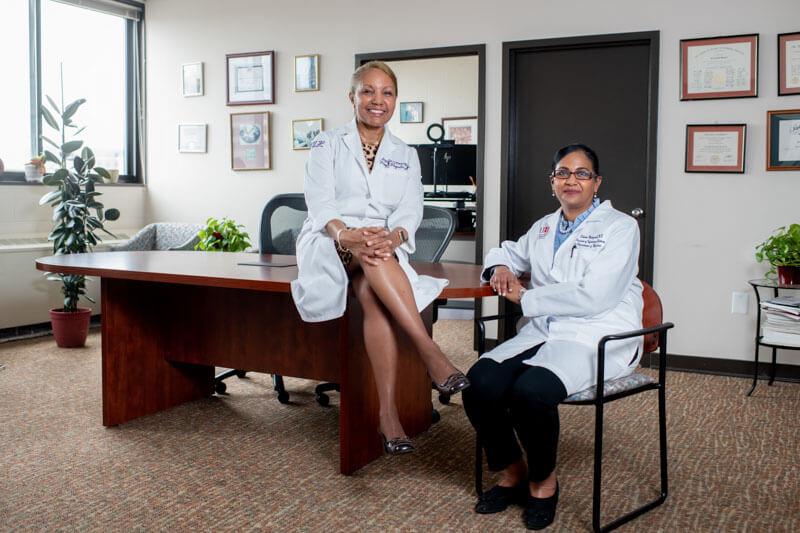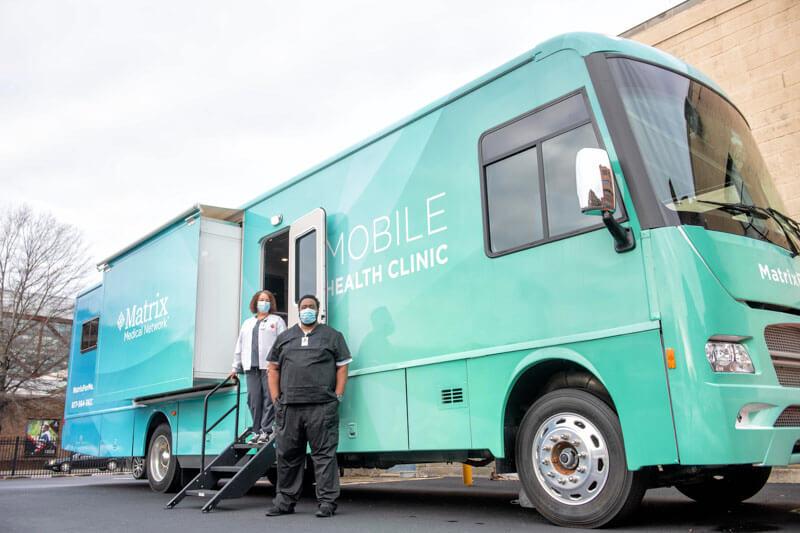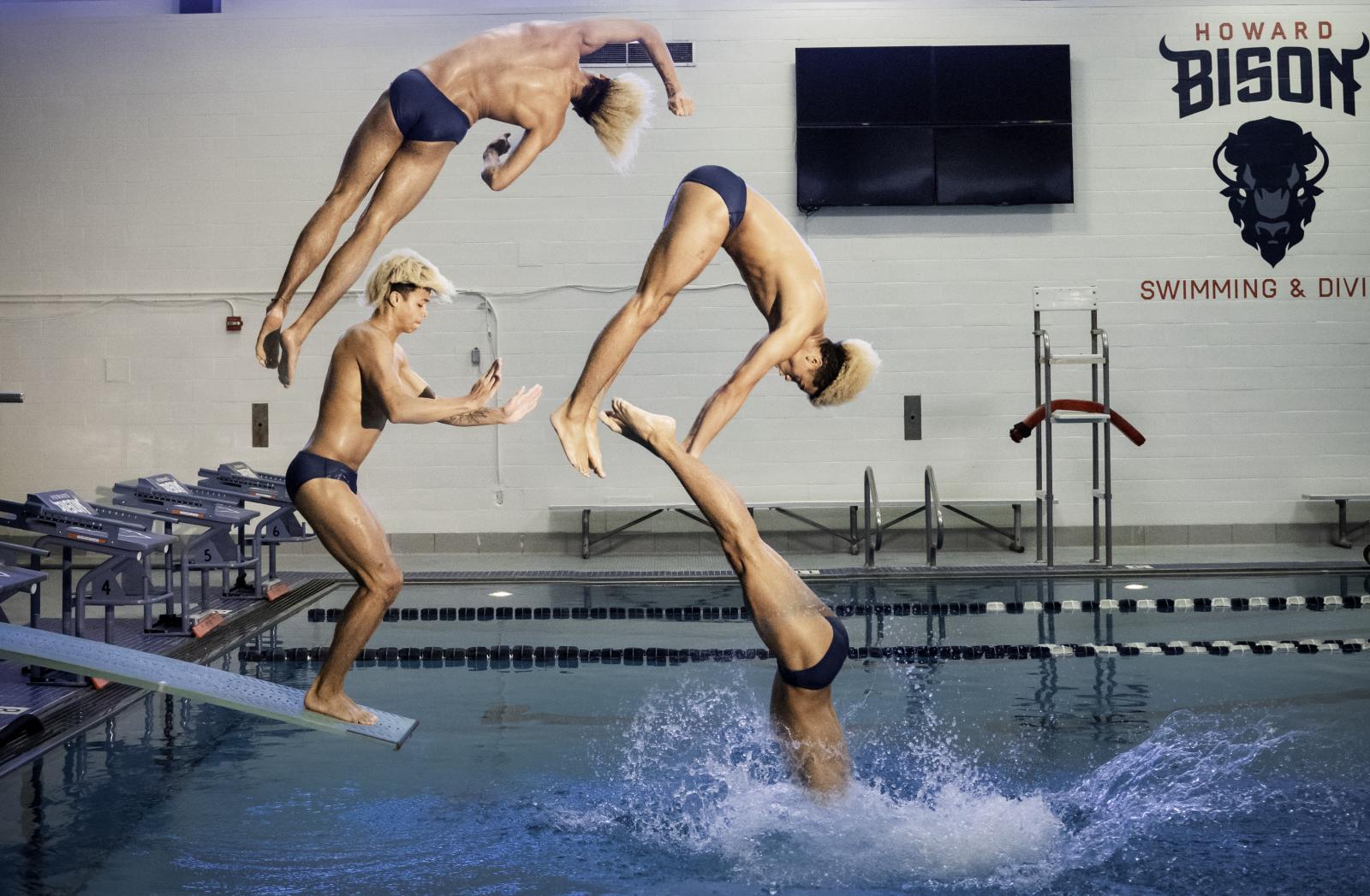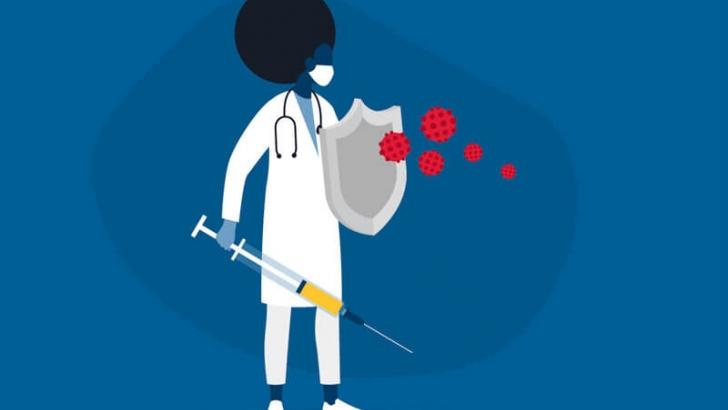As Howard University Hospital rolled out its participation in the COVID-19 trial with vaccine maker Novavax, it was doing more than helping to end the pandemic. It was solidifying relationships in the community.
“There is still a great distrust of biomedical science in our community. But there’s not a distrust of places like Howard University or Howard University Hospital,” says Celia Maxwell, M.D., a frontline medical worker as well as the associate dean of research and professor of infectious diseases at Howard University Medical School. “Many people say, ‘I am coming here to see you because I know you are not going to do anything bad to me.’ There is a comfort that I’ve seen over 40 years of practicing within this community. They have a sense that we have an understanding of their unique issues.”

Diabetes, hypertension, obesity – which are disproportionately higher among African-Americans than, for example, whites – and other diseases heighten chances that a patient will suffer the most debilitating, if not deadly, symptoms of COVID-19. According to research from Johns Hopkins University, COVID-19 infection rates for Black and Latinx Americans were more than 2.5 times and three times higher, respectively, than for whites, leading to greater rates of hospitalization and death for these minority communities. This disparity has provided a singular opportunity for pharmaceutical giants and other health care powerbrokers to reckon with their errors in the past. They knew that communities of color were more vulnerable to the virus and they had to be part of the all-hands-on-deck effort to curb the spread.
This effort to correct historic wrongs included Novavax. The company targeted specific percentages of minority participants in its trials, and other vaccine makers attempted the same. For advocates of a health care system that is tailored to the needs of all people, including those of color, HUH’s part- nership with Novavax marked a turning point. It helped to burnish HUH’s brand as a research-focused destination in health care and health science that places patients front and center.
“We still had more people in the loop waiting to be enrolled,” Maxwell says of the COVID-19 vaccine trial with Novavax, which enrolled 150 partic- ipants at HUH. “But the sponsor closed enrollment. They’d already reached 30,000 participants.” Howard’s involvement in that trial, nonetheless, has been pivotal. “It’s significant,” Maxwell says. “We felt we could translate to people that look like us the importance of participation in an activity that would help save their lives.”
Building Trust and a Solution
At Howard, one of 115 Novavax trial sites across the United States and Mexico, 30 percent of those 150 study participants were African-American, 20 percent were Latinx and still more were from other racial minority groups, says Siham Mahgoub, M.D., lead investigator for Howard’s arm of the Novavax trial. She also is medical director at Howard’s Center for Research in Infectious Disease Management. By enrolling in a trial, some of those individuals defied what have been longstanding hesitations in their communities about lending their bodies to experimental science. Physiological, lifestyle, socioeconomic and other factors affecting wellness and disease can and do vary amongst groups. To help account for that and to fuel production of drugs, development of medical devices and improvement in practices aimed at meeting the medical needs of a wider swath of Americans, federal lawmakers mandated in 2001 that the race and gender makeup of federally funded clinical trials mirror the nation’s demographics. It was a laudable move in the eyes of many.

But federal funding of clinical trials has fallen precipitously in recent decades. Privately owned companies focused on pharmaceutical, medical device and other health care innovations, now finance and control most trials, often treating them as proprietary and hedging against corporate competition. As a result, many companies do not disclose the gender or race of clinical trial enrollees until trials are completed. As one example, after concluding its 2016 trial of an experimental drug designed to undercut Alzheimer’s disease, Eli Lilly executives revealed that just 1.7 percent of participants were Black – even though African-Americans are more likely than all other racial groups to suffer and die from what is the most common form of dementia. Eli Lilly’s trial drug failed.
Creating Transparency
Black, Latinx and other persons of color in Howard’s COVID-19 vaccine trial included patients with preexisting, chronic illnesses. That was a complexity that HUH researchers had to confront.
The Novavax vaccine trial was “double-blinded,” meaning neither researchers nor trial participants knew who was getting a placebo or the actual vaccine. When the trial ended a month after participants received their dose, those who got the placebo would be given the vaccine.
Double-blinding trials involving humans is considered essential to ensuring integrity of the study. If neither researchers nor participants know whether a placebo or the actual vaccine is given or received, this hedges against chances of conscious and unconscious biases influencing either researchers or study participants.
It wasn’t surprising, however, that as severe illness and deaths from the virus mounted, some trial participants were asking to be unblinded so they could find out whether they had received the vaccine or not and to ensure they could get one as quickly as possible.
A provision on the trial’s consent form allowed participants to withdraw from the research. One participant, who did not request to be unblinded, stood out to Maxwell. She was a high-risk, 70-year-old African-American with comorbidities who worried aloud whether she received the vaccine or the placebo. Maxwell and Mahgoub listened to her concerns.
However, she expressed her willingness to continue with the trial because she wanted Howard’s involvement in combatting COVID-19 to be a successful one, and she had put her trust in the doctors.
Maxwell and Mahgoub made the unusual decision of recommending that she withdraw from the trial and be unblinded so they could find out whether she was still at risk of contraction. “This disease has systematically killed many senior citizens,” Maxwell recalls. “I personally think it would have been unethical of me to say, ‘Wait a month until everyone gets the vaccine.’”
As it turned out, she was in the placebo group. Immediately, they gave her a vaccine.
“I cannot say that other institutions [would] do that,” Mahgoub says.
That participant wasn’t the only one who the doctors felt obliged to help, particularly since some patients hadn’t visited a physician in years. The doctors sent one whose blood pressure was too high straight to the emergency room, where that person was officially diagnosed with hypertension; then, the doctors connected that participant with a specialist. For another participant, Mahgoub personally set up an appointment with a neurologist.
“We feel that’s how we differ,” Maxwell interjects. “My science and the way I look at it has been tempered by the needs of the participants – because they are so vulnerable – to make sure they are protected. That is a classic example of how we approach this work.” It’s an approach, she believes, that bolsters the confiidence of actual and potential biomedical-research participants in experimental medicine dispensed through Howard. It’s a confidence in Howard’s bid to expand on the experimental medicine front.
COVID-19 Vaccine Trial Could Lead to Future Trials for Howard
Even so, biomedical research is not new for Howard. Maxwell, for one, has been probing HIV in minority communities for the last three decades. “We’re now looking at a future trial focused on HIV,” she says, as she parsed what Howard has achieved during COVID-19. “HIV is a disproportionately impactful disease for people of color. If we had not done this COVID trial, we would not be able to do one in HIV. Now, we have the infrastructure to do that. Now, we know how to interact in the community so they can be stakeholders in what they would like to see, how they would like to see it.”
Churches and other community organizations were instrumental in spreading the word about Howard’s COVID-19 vaccine trial. Community members sit on Howard University Hospital’s institutional review board (IRB), a federally required body of scientists and nonscientists who set parameters and protocols for biomedical research on human beings.
Research of any kind is multilayered, multi-pronged, rigorous and quite exhausting for the clinicians and public health experts tasked with carrying out that work, says Angella Browne, How- ard University Hospital’s infection control officer.
However, Browne says, it is hugely rewarding. “For me, this last year – from when we got our first COVID case at Howard, until now – has been like being on a rollercoaster. It has been intense. I work long hours. All my life, my goal has been to work for a Black business or institution. Minorities don’t always get the best care. It is not being biased to want our people to have the best. At HUH we provide the best. Our patients deserve the best.”
Howard University Hospital’s work during the coronavirus pandemic has been done with the safety of patients and employees in mind, Browne says.
What Howard has achieved in the time of COVID, Maxwell adds, is critical. It is promising.
“We’ve worked not just to focus on COVID,” she says, “but also to focus on the individual. We’ve had people in this vaccine trial with chronic illnesses who hadn’t been seen by a doctor. We’ve been able to refer people to doctors. We’ve made sure we do any mitigation that we can. ... We understand the intersectionality of all of this. And it has been game-changing."
Article ID: 421




